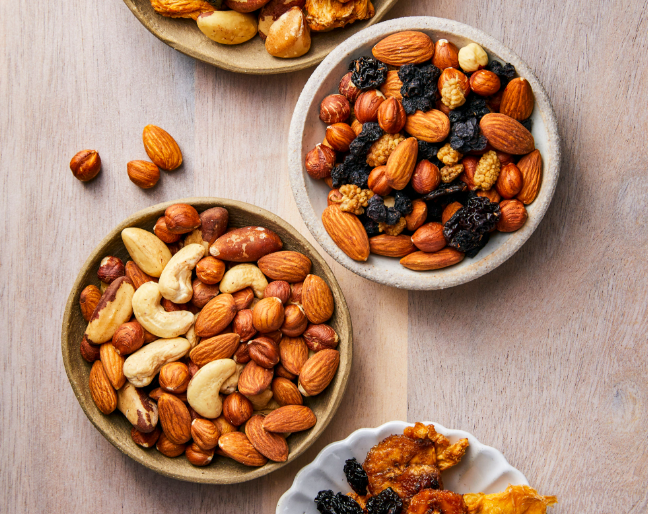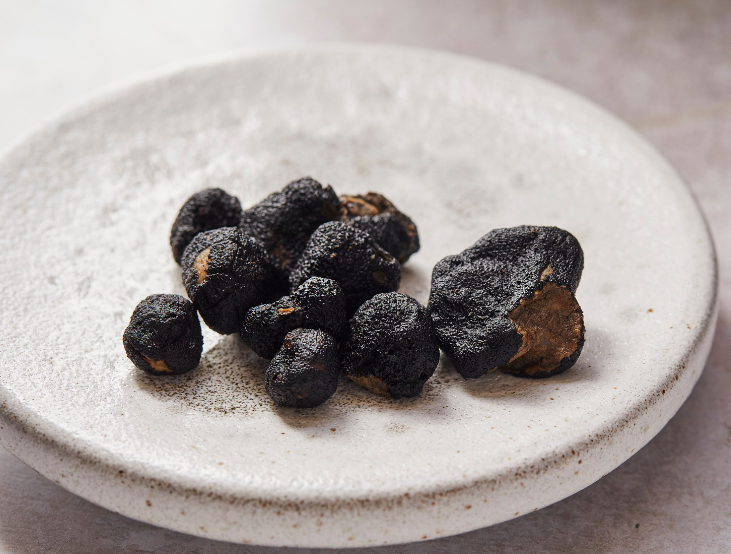Huckleberry or Blueberry: What's the difference?
You’re probably familiar with blueberries, but do you know about huckleberries? Both blueberries and huckleberries are delicious and they look very much alike, but they’re not the same. Here’s a deep dive into what sets blueberries and huckleberries apart.
Huckleberry History
What’s now known as huckleberries were once used by Native Americans for their food and traditional medicine. These native berries were used in herbal remedies to relieve pain and combat infections. So prized were these berries that some Native American tribes held berry collecting ceremonies, which some towns still celebrate to this day. (01)The Huckleberry: What’s In a Name?
In the 1600’s, American colonists mistakenly identified the blue, black, or dark red berries in North America as “hurtleberries.” At that time, a hurtleberry was a nickname for a European berry called a bilberry. The term hurtleberry evolved into the name “huckleberry,” referring to a specific variety of plants. (01) These days, huckleberries refer to a variety of plants that grow in the northwestern U.S. These berries are part of the Ericaceae family and most species grow no more than 4 feet tall. If you come across a tall and leafy huckleberry shrub, then it’s most likely not a huckleberry plant! Their smaller size and hardiness has made huckleberries a metaphor for Huckleberry Finn, one of the most iconic characters in American literature. Even if you’re unfamiliar with huckleberries themselves, you’ve probably heard of Huckleberry Finn. Many scholars believe that Mark Twain named his famous character after the huckleberry because of some striking similarities. Just like the berry, Huckleberry Finn was small, wild, and strong! (02)What’s the Difference Between Huckleberries and Blueberries?
Because of their color, huckleberries are easily mistaken for blueberries. Both berries are bluish-purple, small, round, and grow in clusters. Furthermore, both berries are delectable in jams, pies, muffins, and more. Their taste and texture, however, differ. While blueberries have soft, tiny, almost unnoticeable seeds, huckleberry seeds are considerably larger. These seeds taste bitter when consumed. Biting these seeds offers a satisfying crunch and is a great source of fiber. While blueberries are juicy and sweet, huckleberries have a sharp tart flavor. When the huckleberry plant flowers, its flowers are red. In contrast, blueberries have bright white, pale pink, or light green flowers. (03) Blueberries are smaller than huckleberries, and are typically a darker blue. Huckleberries, on the other hand, can be a bright red color as well as the typical blue shade. Inside, a huckleberry is blue or purple when opened. In contrast, blueberries are white or pale green if slices open.Where Do Blueberries and Huckleberries Grow?
Wild huckleberries grow in states like Washington, Oregon, and Alaska. Foraging for wild huckleberries is a hobby in these areas, because huckleberries are tricky to domesticate. Huckleberries are notoriously resistant to farming, so they’re not generally found in grocery stores. People who try to grow huckleberries in their home gardens will discover that it’s almost impossible to do so. These hardy berries proliferate well in the wild, however, and provide food for a variety of woodland creatures and birds. (Huckleberries are also a favorite of grizzly bears!) The huckleberry plant is famously choosy about where it grows. The plant will always prefer to grow in the wild rather than in a garden or farm. For this reason, “huckleberry” seedlings sold in nurseries to garden consumers are typically a blueberry species with larger fruit. (03) Blueberries can be grown most anywhere. Like huckleberries, blueberries can be found in the wild. But they’ll also thrive in a pot on your porch. They’re easy to find in grocery stores or you can grow them in your garden. Still, fresh and organic blueberries and huckleberries are typically packed with more flavor than those found in your corner store.Huckleberries and Blueberries: Powerful Antioxidants
Huckleberries and blueberries have one crucial thing in common – they’re both chock full of antioxidants. (04) An antioxidant is a substance that prevents or delays cellular damage from free radicals. Free radicals are unstable molecules that mostly come from the environment. For example, air pollution, the sun’s UV rays, and cigarette smoke are all sources of free radicals. Exposure to free radicals causes “oxidative stress.” Oxidative stress then results in cellular damage, contributing to the development of diseases like cancer, cataracts, and heart disease. Research indicates that eating a diet high in antioxidants can help reduce the chances of developing diseases caused by free radicals. In particular, dark berries like blueberries and huckleberries are exceptionally high in disease-fighting antioxidants. (05) The Journal of Agriculture and Food Chemistry notes high concentrations of the antioxidants anthocyanin and polyphenols in huckleberries. (06) The intense blue pigment of fruits like huckleberry and blueberries is caused by the anthocyanin found in the fruits. Anthocyanin helps to reduce the risks for: (07)- Cardiovascular disease
- Colon cancer
- Obesity
- Bacterial infections
- Diabetes
- Chronic inflammation
- Vision problems
- Blood clots


